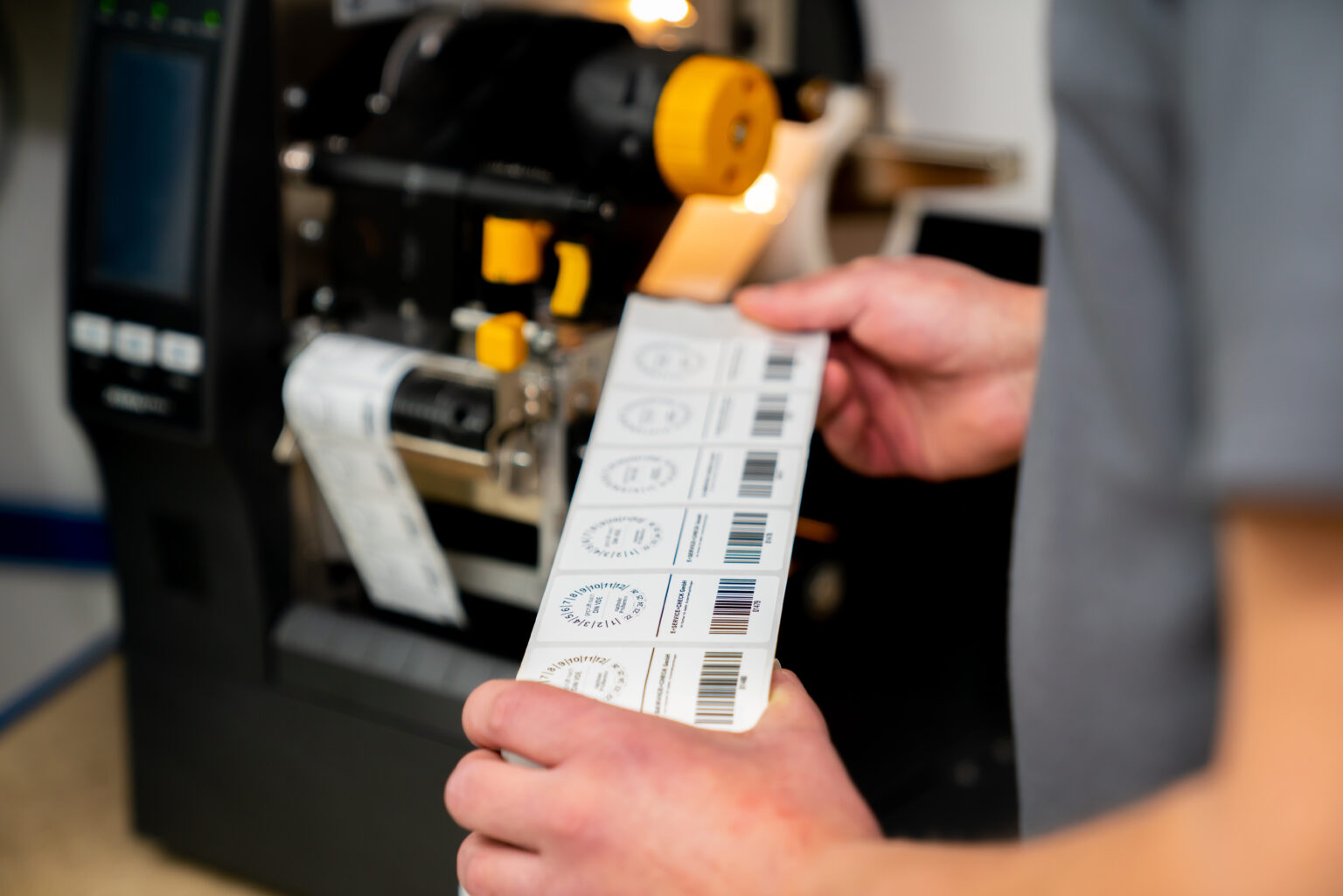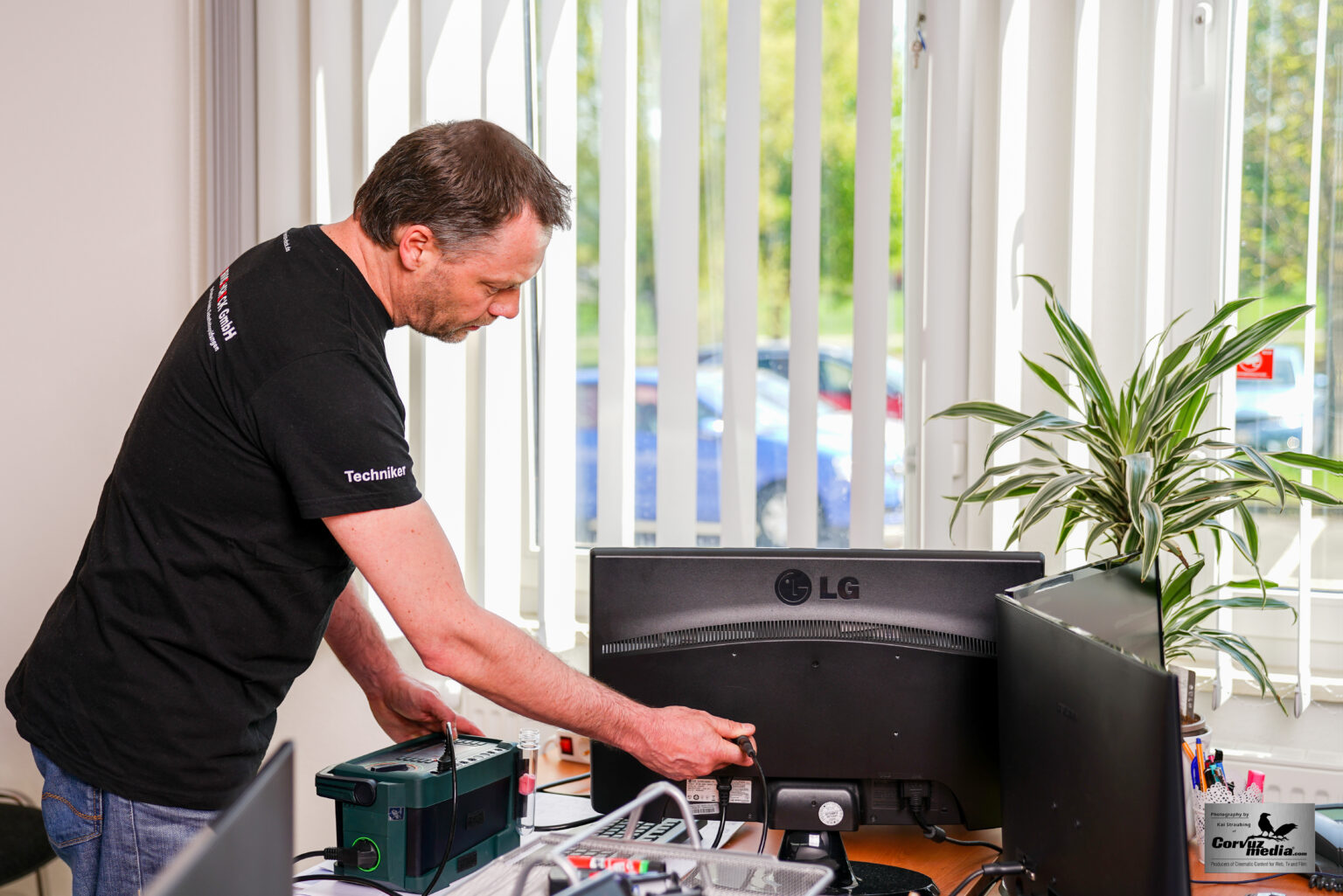When was the last time your electrical equipment was thoroughly examined? In Dietzenbach, the DGUV V3 Prü-fung (test) is an essential routine that ensures the safety and functionality of all electric devices in the workplace. This mandatory inspection isn’t just a bureaucratic hurdle; it is designed to prevent accidents and potential electri-cal hazards.
DGUV V3 Prüfung has a long-standing history of protecting workers and maintaining safety standards in Germa-ny. Initially introduced to address rising injury rates in industrial settings, this regulation has become more perti-nent with each passing year. Now, around 33% of business-related electrical accidents can be traced back to com-pliance failures, proving the significance of these inspections in places like Dietzenbach.
DGUV V3 Prüfung in Dietzenbach is a mandatory inspection to ensure workplace electrical safety. It aims to pre-vent electrical accidents and failures by regularly checking all electrical devices for compliance with safety stan-dards. This inspection is crucial for maintaining a safe working environment and preventing potential hazards.
DGUV V3 Prüfung Dietzenbach
DGUV V3 Prüfung is essential in Dietzenbach for ensuring workplace safety. This mandatory test checks all electrical equipment to prevent accidents. The inspection aims to find any faults before they become dangerous. It includes checking cables, plugs, and the overall condition of devices. Passing this test means your equipment is safe and complies with regulations.
The process of DGUV V3 Prüfung involves several steps. First, a visual inspection is conducted to spot any obvious damage. Next, electrical measurements are taken to ensure everything works correctly. Finally, functional tests are performed to make sure the equipment operates safely. This thorough examination helps keep workplaces safe.
Businesses in Dietzenbach have to schedule these inspections regularly. The frequency depends on the type of equipment and how it’s used. Some devices need to be checked every six months, while others might need annual inspections. Regular testing helps identify and fix issues early. It also helps avoid costly repairs later on.
There are many benefits to passing the DGUV V3 Prüfung. It reduces the risk of electrical accidents, which can be life-threatening. It also boosts confidence among employees, knowing they are working with safe equipment. Moreover, it ensures compliance with legal requirements. Overall, it’s a crucial part of workplace safety in Dietzenbach.

Who Needs DGUV V3 Testing?
DGUV V3 testing is mandatory for many businesses and organizations. Companies with electrical equipment used by employees must undergo these tests. This includes offices, factories, and schools, where electrical devices are frequently used. Even shops and restaurants need to ensure their devices are safe. The testing helps everyone stay protected from electrical hazards.
Certain industries have even stricter requirements. For example, hospitals and healthcare facilities need regular DGUV V3 testing due to the critical nature of their equipment. Machine shops and construction sites also fall under this category because they rely heavily on various electrical tools. Regular inspections are crucial in these environments. They help prevent accidents and ensure smooth operations.
The frequency of these tests varies. Some equipment needs to be checked every six months, while other devices may only require annual inspections. The type of equipment and how often it’s used determine the testing schedule. Companies should keep track of all their devices. This helps them comply with regulations and maintain a safe working environment.
There are several benefits to conducting DGUV V3 testing. It prevents equipment failures and potential hazards. It also helps businesses avoid costly repairs and downtime. Employees feel safer knowing their tools are regularly inspected. Overall, it’s a necessary step to ensure workplace safety and efficiency.
How Often Should DGUV V3 Tests Be Conducted?
The frequency of DGUV V3 tests depends on the type of equipment and its usage. For instance, portable equipment used daily needs testing every six months. On the other hand, stationary devices might only require annual inspections. High-risk environments may need more frequent checks. This ensures that all equipment remains in safe working condition.
Here is a general guideline on how often DGUV V3 tests should be conducted:
- Portable equipment used daily: Every 6 months
- Stationary equipment: Annually
- High-risk environments: More frequent checks (as recommended by an expert)
- Specialized medical equipment: As per manufacturer’s guidelines or expert recommendation
It’s important to keep a record of all inspections. Regular documentation helps track when the next test is due. Many companies use software to manage this schedule efficiently. This organized method ensures compliance with safety regulations. Employees can perform their duties knowing the equipment is safe to use.
For companies in critical sectors, like healthcare or construction, these tests might be more frequent. In hospitals, for instance, equipment failure could mean life or death situations. Therefore, adhering to a strict testing schedule is crucial. This practice not only ensures safety but also boosts confidence in your workplace’s reliability. Regular checks significantly reduce the risk of accidents and improve overall efficiency.

Choosing a Qualified Tester in Dietzenbach
When looking for a qualified tester in Dietzenbach, start by checking their certification. Certified testers have the proper training to conduct DGUV V3 inspections correctly. They are familiar with all the safety standards and procedures. Hiring a certified professional ensures accuracy in the testing process. It also ensures that your equipment will meet legal requirements.
Experience is another crucial factor. An experienced tester can identify potential issues quickly and efficiently. They know what to look for in various types of equipment and different environments. Ask potential testers about their experience and previous clients. This background information can give you confidence in their skills.
Here are some key things to consider when choosing a qualified tester:
- Certification and training
- Experience with similar equipment
- References from previous clients
- Understanding of local regulations
References and reviews can also help you make a decision. Look for testimonials or feedback from other businesses in Dietzenbach. Positive reviews indicate that the tester is reliable and professional. Word of mouth can be a valuable resource. It helps you find someone trusted by others in your community.
Finally, consider the cost of the testing services. While you don’t want to compromise on quality, it’s essential to find a service that fits your budget. Some companies offer packages that include regular testing at a discounted rate. Compare quotes from different testers to make an informed decision. Quality and affordability can go hand in hand.
What to Expect During the DGUV V3 Testing Process
The DGUV V3 testing process starts with a visual inspection of your electrical equipment. The tester looks for any visible damages, such as frayed cables or broken components. This step helps identify obvious issues that could pose risks. It’s quick yet crucial. This step ensures a safe starting point for deeper inspections.
Next, the tester performs electrical measurements. They use specialized tools to measure voltage, current, and resistance. These measurements verify that your equipment is operating within safe limits. Any deviations can indicate underlying problems. Correcting these issues early can prevent future failures.
Functional tests come after the measurements. During this phase, the tester checks if the equipment works correctly under normal operating conditions. They might run devices at full capacity to see if they handle stress well. This step helps identify performance issues that wouldn’t be visible otherwise. It ensures that the equipment performs its intended functions safely.
| Step | Description |
|---|---|
| Visual Inspection | Check for visible damages |
| Electrical Measurements | Measure voltage, current, resistance |
| Functional Tests | Test equipment under normal conditions |
After the tests, the results are documented. The tester provides a detailed report outlining any issues found and the steps taken to fix them. This report serves as a record for future inspections. It also helps your business maintain compliance with safety regulations. Keeping this documentation is essential for ongoing safety and efficiency.
If any equipment fails the tests, immediate action is recommended. The tester will advise on repairs or replacements needed. Quick fixes can often solve minor issues. For more severe problems, longer-term solutions might be required. Addressing these issues promptly assures a safer work environment.
Key Takeaways
- DGUV V3 testing begins with a visual inspection for obvious damage.
- Electrical measurements check voltage, current, and resistance for safety.
- Functional tests ensure equipment works correctly under normal conditions.
- The process includes a detailed report of findings and fixes.
- Quick action on failed tests ensures a safer work environment.
Frequently Asked Questions
1. What is checked during DGUV V3 testing?
2. Why is DGUV V3 testing important?
3. How often should DGUV V3 tests be performed?
4. Who is qualified to perform DGUV V3 testing?
5. What happens if a piece of equipment fails DGUV V3 testing?
Conclusion
Ensuring electrical safety through DGUV V3 testing is crucial for any workplace. Regular inspections not only prevent accidents but also save on long-term costs. By choosing qualified testers, businesses can maintain compliance and foster a safer environment.
Understanding the DGUV V3 process helps in planning and executing timely inspections. Regular checks and prompt repairs ensure that all equipment remains in optimal condition. Overall, embracing these practices leads to a safer, more efficient workplace.